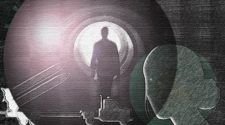About ‘Storytelling’ as a means of recreation. – A neutral perspective.
Storytelling describes the social and cultural activity of sharing stories, sometimes with improvisation, theatrics, or embellishment. Every culture has its own stories or narratives, which are shared as a means of entertainment, education, cultural preservation or instilling moral values. Crucial elements of stories and storytelling include plot, characters and narrative point of view.
The term “storytelling” can refer in a narrow sense specifically to oral storytelling and also in a looser sense to techniques used in other media to unfold or disclose the narrative of a story.
Modern storytelling has a broad purview. In addition to its traditional forms (fairy-tales, folktales, mythology, legends, fables etc.), it has extended itself to representing history, personal narrative, political commentary and evolving cultural norms. Contemporary storytelling is also widely used to address educational objectives. New forms of media are creating new ways for people to record, express and consume stories. Tools for asynchronous group communication can provide an environment for individuals to re-frame or recast individual stories into group stories. Games and other digital platforms, such as those used in interactive fiction or interactive storytelling, may be used to position the user as a character within a bigger world. Documentaries, including interactive web documentaries, employ storytelling narrative techniques to communicate information about their topic. Self-revelatory stories, created for their cathartic and therapeutic effect, are growing in their use and application, as in Psychodrama, Drama Therapy and Playback Theater.
Therapeutic storytelling is the act of telling one’s story in an attempt to better understand oneself or one’s situation. Oftentimes, these stories affect the audience in a therapeutic sense as well, helping them to view situations similar to their own through a different lens. Noted author and folklore scholar, Elaine Lawless states, “…this process provides new avenues for understanding and identity formation. Language is utilized to bear witness to their lives”. Sometimes a narrator will simply skip over certain details without realizing, only to include it in their stories during a later telling. In this way, that telling and retelling of the narrative serves to “reattach portions of the narrative”. These gaps may occur due to a repression of the trauma or even just a want to keep the most gruesome details private. Regardless, these silences are not as empty as they appear, and it is only this act of storytelling that can enable the teller to fill them back in.
Featured image courtesy: pxhere.com
Nobody is a villain in their own story. We’re all the heroes of our own stories. – George R. R. Martin























